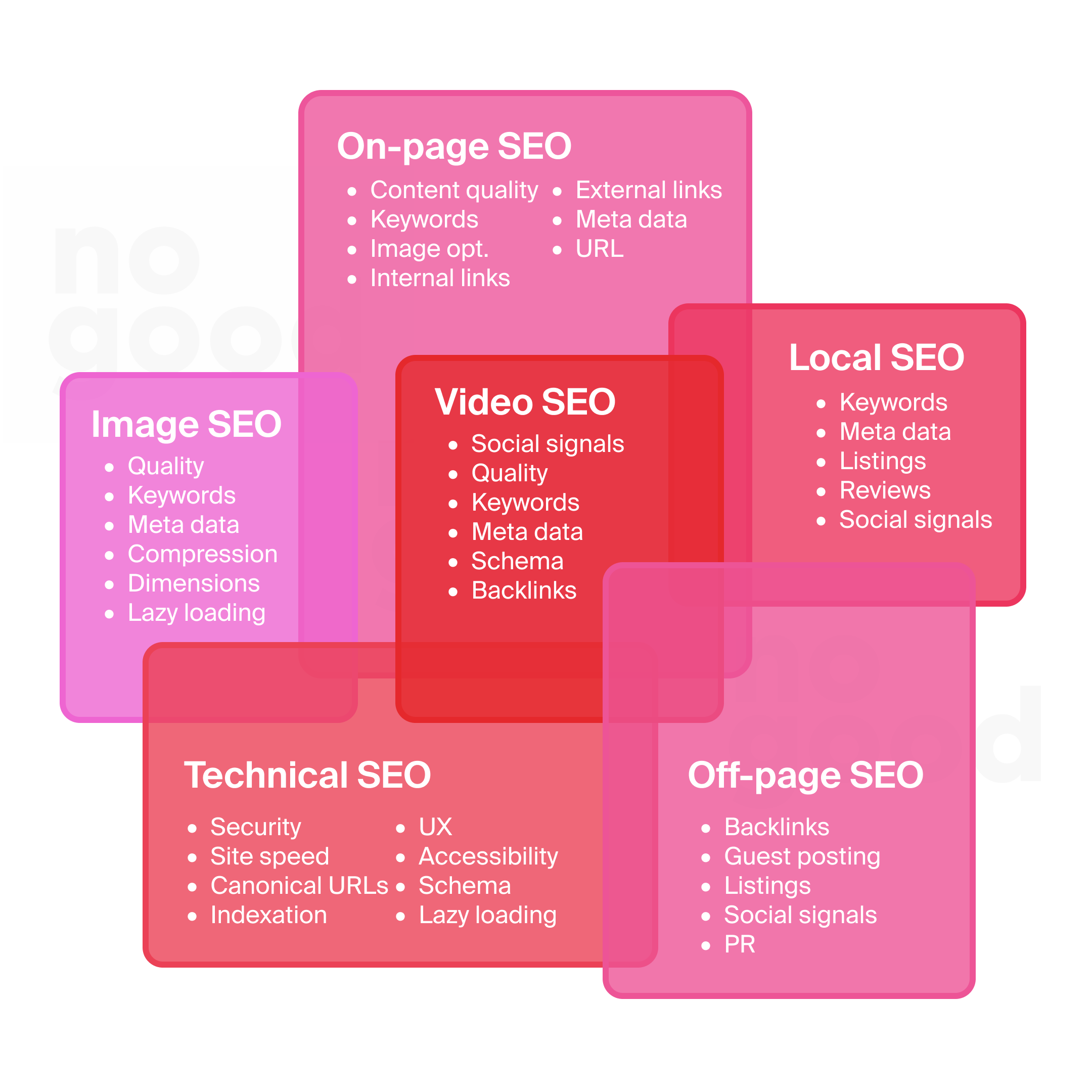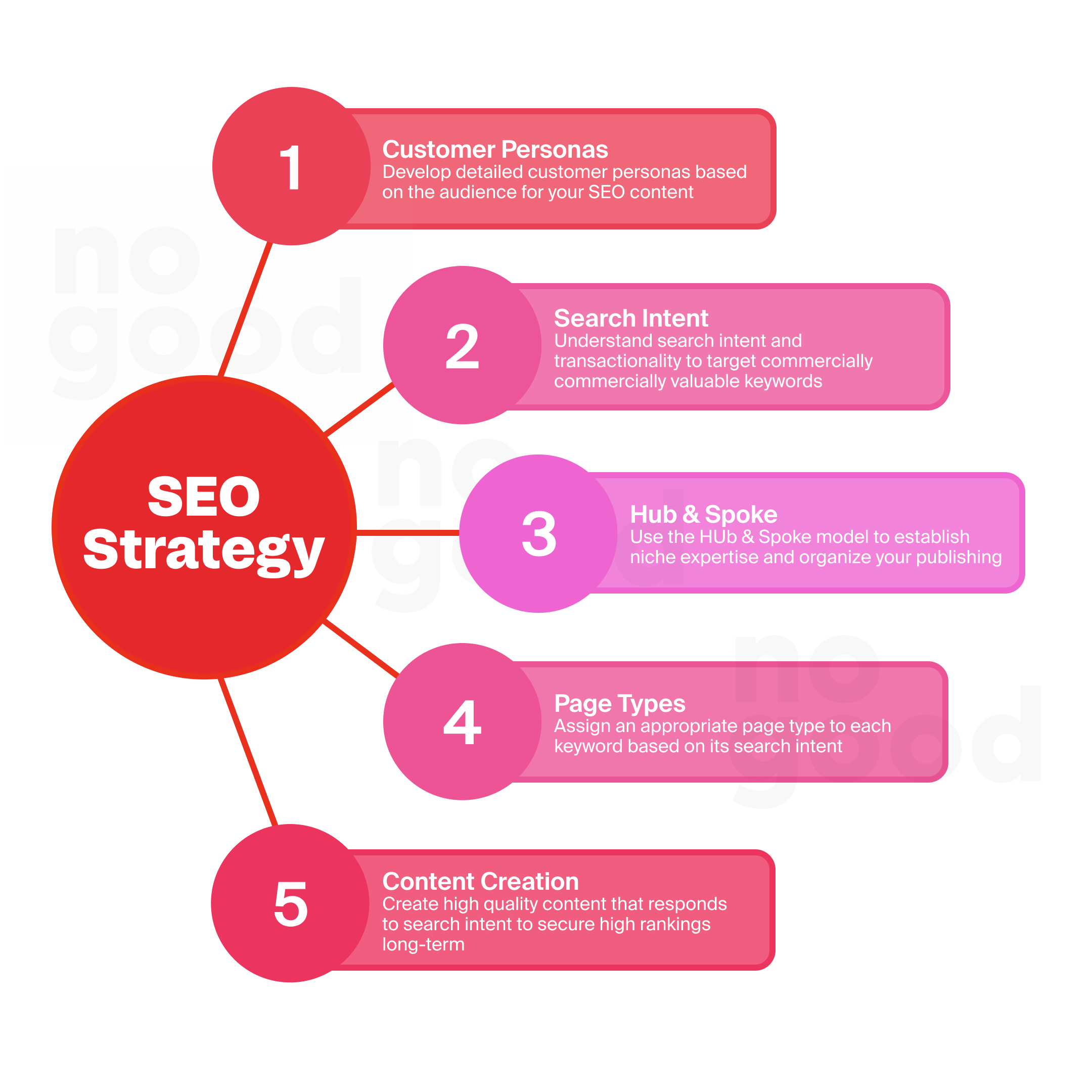In today’s modern age, the internet has transformed how we access information, and healthcare is no exception. When people need medical professional advice, search for healthcare services, or look for healthcare providers, they often turn to search engines like Google, Bing, Yahoo, etc. This shift in consumer behavior has given rise to the crucial role of Healthcare Search Engine Marketing, like in every other sector today.
So, what exactly does SEM mean in healthcare, and why is it so vital for hospitals, medical practices, and healthcare facilities? This comprehensive guide will delve into healthcare SEM and uncover its significance for healthcare organizations. From boosting organic search traffic to enhancing the overall user experience, healthcare SEM isn’t just a popular term—it’s a fundamental component of any healthcare provider’s digital marketing strategy. Continue reading as we explore the intricacies of healthcare SEM, its unique relevance in the healthcare industry, and the compelling reasons why it’s a lifeline for healthcare professionals navigating the digital landscape.
What is SEM in Healthcare?

Search Engine Marketing (SEM) in healthcare is a comprehensive digital marketing approach that encompasses both Search Engine Optimization (SEO) and Pay-Per-Click (PPC) advertising strategies. This powerful marketing technique is designed to target and engage specific audiences within the healthcare field. SEM involves optimizing a healthcare website’s content to improve its ranking on search engine results pages (SERPs) for relevant search queries. It ensures that the website is visible to potential patients and healthcare professionals seeking information or services.
PPC advertising, often facilitated through platforms like Google Ads, allows healthcare marketers to create targeted search campaigns featuring healthcare-related ads. These ads appear prominently in search results when users enter specific keywords related to the healthcare industry or popular search terms. SEM is effective at aligning with the search intent of users, driving clicks that convert into valuable leads or actions while keeping track of the cost per conversion. It also provides options for precise location targeting, enabling healthcare advertisers to make efficient use of their advertising budget. This makes SEM a crucial component in the field of healthcare advertising services, helping craft successful campaigns that resonate with healthcare professionals and patients alike.
What Does SEO Stand for in Healthcare?
There are so many new endeavors in the healthcare industry today, such as health-tech startups, Artificial Intelligence (AI) in Healthcare (e.g. IBM Watson for Healthcare and Google’s DeepMind Health, etc.), Telemedicine and Telehealth (e.g. Teladoc and Amwell, etc.), Healthcare Wearables (e.g. Whoop, Oura Ring, etc.). As all healthcare companies aim to establish a robust online presence, they increasingly recognize the importance of healthcare SEO efforts. These strategies go beyond traditional advertising and reach potential patients where they are most active – on search engines like Google.
By employing effective medical SEO strategies, healthcare providers can improve their search engine rankings, ensuring that their medical websites appear prominently in organic search results. When individuals search for health services or medical content related to their needs, they are likelier to see healthcare organizations investing in SEO. This visibility increases the chances of attracting prospective patients and builds trust within the healthcare industry.
The Significance of Healthcare SEO
In today’s information-driven world, individuals are turning to search engines as their primary source of healthcare information. Whether someone is looking for a specialist, seeking information about a specific medical condition, or trying to find reviews and recommendations for a healthcare provider, it all begins with a simple online search. This is where Healthcare SEO comes into play.
- Enhanced Visibility and Credibility: When potential patients search for medical services or related information, appearing near the top of search results instill a sense of credibility and trust in the provider. People tend to associate higher search rankings with expertise and reliability.
- Targeted Patient Acquisition: Effective Healthcare SEO and Healthcare search engine marketing strategy involve using keywords and phrases relevant to a provider’s specialties. This ensures that the website is visible to individuals actively seeking the services offered by the healthcare provider. Consequently, healthcare SEO and SEM help attract a more targeted audience of potential patients more likely to convert.
- Competitive Edge: With the increasing competition in the healthcare industry, having a strong online presence can set a provider apart from competitors. Well-optimized websites and informative and engaging content attract patients and keep them engaged and informed. This creates a lasting impression and strengthens the provider’s position in the market.
- Trust and Transparency: Healthcare SEO can showcase a provider’s expertise, achievements, and patient testimonials. This transparency fosters trust between the provider and potential patients. Patients are more likely to choose a healthcare provider they know and trust, even before setting foot in the clinic or hospital.
- Local Patient Base: Local SEO strategies are especially crucial for healthcare providers, as many patients prefer medical care from nearby facilities. Optimizing for local searches ensures that a healthcare practice appears in local listings, Google Maps, and local directories, making it easier for local patients to find and choose their services.
What is PPC in Healthcare?
In the realm of healthcare marketing, PPC, or Pay-Per-Click, is a digital advertising strategy that healthcare organizations use to promote their services online. It involves creating and running paid advertisements on platforms like Google Ads. These healthcare PPC ads are strategically displayed to users when they enter specific search queries related to healthcare services, medical information, or other relevant topics. The essence of PPC lies in the fact that advertisers pay a fee each time their ad is clicked, making it a cost-effective way to reach potential patients actively searching for healthcare-related information or services.
PPC in healthcare offers several key advantages:
- Immediate Visibility: PPC allows healthcare organizations to gain immediate visibility by appearing at the top of search engine results pages (SERPs) when specific keywords and search terms are entered.
- Targeted Audience: PPC campaigns can be tailored to reach a highly specific audience based on factors such as keywords, location, demographics, and more.
- Cost Control: PPC campaigns provide control over advertising budgets, allowing organizations to set daily or monthly spending limits. This ensures that healthcare marketers can manage their advertising expenses effectively.
- Conversion Tracking: PPC platforms offer robust conversion tracking tools, enabling healthcare organizations to measure the effectiveness of their ads. Metrics like the cost per conversion can be monitored, allowing for campaign refinement and improved results.
- Location Targeting: Healthcare providers can use PPC advertising to focus on specific geographic areas, ensuring that they reach local patients actively searching for nearby healthcare services.
- Flexibility: PPC campaigns offer flexibility in allocating budgets and adjusting strategies based on ad performance and ROI.
The Significance of Healthcare PPC
In today’s digital age, individuals increasingly turn to search engines as their primary source of healthcare information and service discovery. Whether someone is looking for a specialist, seeking information about a specific medical condition, or trying to find reviews and recommendations for a healthcare provider, it often starts with an online search. This is where Healthcare PPC comes into play.
- Enhanced Visibility and Patient Acquisition: Healthcare PPC strategies ensure that healthcare providers’ ads appear prominently in SERPs when users enter relevant search queries. This not only enhances visibility but also facilitates targeted patient acquisition. PPC campaigns focus on keywords related to the services offered, attracting a specific audience likely to convert.
- Competitive Advantage: In an increasingly competitive healthcare industry, a strong online presence can set a healthcare provider apart from competitors. Well-optimized PPC campaigns, along with engaging ad content, attract patients and help providers establish a robust position in the market.
- Cost-Effective Marketing: Healthcare PPC offers a cost-effective marketing approach, as organizations only pay when users click on their ads. This ensures that advertising budgets are spent efficiently, targeting individuals actively interested in healthcare services.
- Immediate Impact: Unlike some marketing strategies that take time to yield results, PPC provides an immediate impact. Healthcare organizations can quickly launch campaigns and start generating traffic and leads.
- Data-Driven Decision-Making: PPC platforms offer comprehensive data and analytics, allowing healthcare marketers to make data-driven decisions to optimize their campaigns continually.
Healthcare SEM 101
Healthcare SEO and PPC are two indispensable tools in the digital marketing arsenal of healthcare providers. Healthcare SEO, or Search Engine Optimization, involves optimizing a healthcare website’s content to achieve higher rankings in organic search results. It ensures that potential patients find the website when searching for healthcare services or information. On the other hand, healthcare PPC, or Pay-Per-Click advertising, enables healthcare organizations to create targeted ads displayed on platforms like Google Ads. These ads appear when users enter specific healthcare-related search queries, delivering immediate visibility to a precise audience. In the ever-evolving healthcare landscape, mastering these fundamental strategies is essential for building a strong online presence and connecting with patients effectively.
The Basics of Healthcare SEO

1. On-Page SEO for Healthcare Websites:
On-page SEO involves optimizing the content and structure of a healthcare website to enhance its visibility in search engine rankings. Key elements of on-page SEO include:
- Keyword Research: Identifying the most relevant and high-value keywords related to healthcare services, combined with secondary keywords. These keywords should be strategically incorporated into website content, including headlines, meta descriptions, and body text.
- Content Quality: Creating high-quality content, informative, and engaging content that addresses the needs and questions of patients. Content should be medically accurate, user-friendly, and regularly updated.
- Title Tags and Meta Descriptions: Crafting compelling title tags and meta descriptions that not only contain keywords but also entice users to click through to the website.
- Mobile Optimization: Ensuring the website is responsive and user-friendly on mobile devices so users do not bounce, as Google prioritizes mobile-friendly websites in its search rankings.
2. Off-Page SEO for Building High-Quality Backlinks:
Off-page SEO focuses on activities outside the healthcare website itself to improve its search engine rankings. A critical aspect of off-page SEO is building high-quality backlinks:
- Backlinks: Earning backlinks from authoritative healthcare websites and reputable sources can significantly boost a website’s credibility in the eyes of search engines. These links should be natural and relevant to healthcare topics.
- Social Signals: Engaging in Healthcare social media marketing and sharing healthcare content can help increase brand visibility and indirectly influence search engine rankings.
- Advertorials: Creating advertorials that provide valuable and detailed information related to your brand and healthcare services can serve as both a source of high-quality backlinks and a means of creating brand awareness.
3. Local SEO for Healthcare Businesses:
Local SEO is especially crucial for healthcare providers who serve specific geographic areas. Local SEO tactics include:
- Google My Business: Claiming and optimizing a Google Business Profile listing to appear in local map searches and provide essential information like location, hours, and reviews.
- Local Directories: Ensuring consistent and accurate NAP (Name, Address, Phone number) information across local directories and review platforms to improve local search visibility.
- Local Content: Creating content tailored to local healthcare topics and community engagement to appeal to local patients.
4. Importance of User Experience and Load Times for Healthcare Sites:
User experience and website load times are critical aspects of healthcare SEO:
- User Experience (UX): A positive user experience is vital for retaining visitors and encouraging them to explore the website. This includes intuitive navigation, easy appointment scheduling, and clear calls to action.
- Page Load Times: Google considers page load times in its organic ranking algorithms. Healthcare websites must optimize images and minimize code to ensure fast loading, especially on mobile devices. (https://pagespeed.web.dev/)
The Basics of Healthcare PPC
At its core, Healthcare PPC (Pay-Per-Click) is a digital advertising strategy that empowers healthcare providers to effectively engage with their target audience online. It starts with meticulous keyword research, identifying the most relevant and high-impact keywords specific to healthcare services. These keywords serve as the foundation for creating persuasive advertisements that prominently feature in search engine results when users enter healthcare-related search queries. Here are the key elements of Healthcare PPC:
- Keyword Research: Thoroughly researching and selecting the right keywords related to healthcare services, including secondary keywords. These chosen keywords are strategically woven into the content of the advertisements, encompassing headlines, meta descriptions, and body text.
- Targeted Audience: Precision is paramount in PPC campaigns, as they can be tailored to reach a highly specific audience based on factors such as location, demographics, and user behavior. This ensures that healthcare ads are presented to individuals with a genuine interest in the services offered.
- Budget Control: Healthcare organizations have full control over their advertising budget, allowing them to set daily or monthly spending limits. This level of control ensures that advertising expenses are managed efficiently.
- Conversion Tracking: PPC platforms provide robust tools for tracking conversions, enabling healthcare organizations to measure the effectiveness of their ads. Metrics like the cost per conversion are closely monitored, allowing for ongoing refinement of campaigns to yield better results.
- Location Targeting: In healthcare, local presence matters. Healthcare providers can leverage PPC advertising to focus on specific geographic areas, ensuring that local patients actively searching for nearby healthcare services are reached effectively.
- Flexibility: PPC campaigns offer flexibility in budget allocation and strategy adjustments based on ad performance and ROI.
Healthcare SEM Strategies
Healthcare SEM (Search Engine Marketing) strategies encompass a comprehensive approach to bolstering the online presence of healthcare providers and effectively connecting with their target audience. These strategies harness the combined power of Search Engine Optimization (SEO) and Pay-Per-Click (PPC) advertising, ensuring visibility on popular search engines such as Google. Here are some key elements of healthcare SEM strategies:
- Ad Copy Optimization: Crafting compelling ad copy is a crucial aspect of healthcare SEM. Advertisements should not only contain relevant keywords but also engage users and encourage them to click. A/B testing different ad copies can help identify which messages resonate most with the target audience, leading to improved click-through rates and conversions.
- Remarketing and Retargeting: Remarketing and retargeting campaigns allow healthcare providers to re-engage with users who have previously visited their website but did not convert. These campaigns target users with tailored ads across the web and social media, reminding them of the healthcare services and information they explored earlier.
- Negative Keywords: Implementing negative keywords is essential to refine healthcare PPC campaigns. Negative keywords are terms for which ads should not be displayed. By carefully selecting negative keywords, healthcare providers can prevent their ads from appearing in irrelevant search queries, thus saving ad spend and improving campaign efficiency.
- Quality Score Improvement: Google Ads assigns a Quality Score to each keyword in a PPC campaign, which affects ad placement and costs. Strategies to improve Quality Scores include enhancing ad relevance, optimizing landing pages for user experience, and ensuring keyword-ad-landing page alignment.
- Ad Extensions: Ad extensions provide additional information within the PPC ad, such as location details, phone numbers, and links to specific pages on the website. Utilizing ad extensions can make ads more informative and attractive to users, potentially increasing click-through rates.
- Competitor Analysis: Analyzing the SEM strategies of competitors can provide valuable insights. Understanding which keywords and tactics competitors are using can help healthcare providers identify opportunities and refine their own SEM strategies for better results.
- Budget Optimization: Efficiently managing the advertising budget is crucial for healthcare SEM success. Continuous monitoring of campaign performance and adjusting budgets based on top-performing keywords and campaigns helps maximize the return on investment (ROI) for healthcare advertising.
- Ad Schedule and Geotargeting: Fine-tuning ad schedules and geotargeting settings can be highly effective for healthcare providers. Ad scheduling allows ads to appear during specific hours or days when potential patients are most active online. Geotargeting ensures that ads are displayed to users in specific geographic areas, particularly beneficial for local healthcare services.
- Conversion Tracking and ROI Analysis: Setting up robust conversion tracking is essential for measuring the success of healthcare SEM campaigns. Analyzing the ROI of different campaigns and keywords enables healthcare providers to allocate resources effectively and optimize their strategies for the best results.
Implementing Healthcare SEO strategies

Keyword Research and Optimization in Healthcare SEO
1. Process of Keyword Research Using Keyword Research Tools:
Keyword research tools are the secret sauce behind any successful SEO strategy. SEO experts and healthcare professionals often use these tools to identify relevant keywords and phrases that will drive organic website traffic. Some popular platforms for keyword analysis include:
- Google Keyword Planner: This tool, provided by Google, offers insights into the keyword search volume and competition. It’s a great starting point for keyword research.
- SEMrush: SEMrush provides comprehensive keyword data, competitive analysis, and content optimization recommendations. It’s invaluable for understanding your competition’s keyword strategies.
- Moz Keyword Explorer: Moz’s tool gives you keyword data and offers keyword difficulty scores, helping you identify keywords within your reach.
- Ahrefs Keyword Explorer: Ahrefs is known for its thorough keyword analysis, including search volume, click-through rate (CTR) estimates, and competitor insights.
The keyword research process typically follows these steps:
- Identify Seed Keywords: Start with a few broad, relevant keywords related to healthcare services or topics you want to target.
- Expand with Tools: Utilize keyword research tools to expand your list of keywords. These tools provide data on search volume, competition, and related terms.
- Competitor Analysis: Analyze the keywords your competitors are targeting. This can offer valuable insights into gaps or opportunities in your strategy.
- Long-Tail Keywords: Pay attention to long-tail keywords, which are more specific and often have lower competition. These can attract highly targeted traffic.
- Consider User Intent: Always consider the intent behind each keyword. Are users looking for information, seeking a specific healthcare service, or searching for local healthcare providers?
2. Significance of Using Relevant Healthcare Keywords:
Why is it crucial to use relevant healthcare keywords?
- Targeted Traffic: Relevant keywords ensure that your content reaches individuals actively searching for the services or information you provide, resulting in more targeted traffic to your website.
- User Satisfaction: Content aligned with user intent helps visitors find the information they seek, improving user satisfaction and engagement. This, in turn, can positively impact your website’s search engine rankings.
- Competitive Advantage: By optimizing for specific healthcare keywords, you can gain a competitive edge in your niche. This is particularly important in the healthcare industry, where competition is fierce.
3. Importance of Optimizing Description Tags and Meta Descriptions for Healthcare Content:
Description tags (or meta descriptions) are the snippets of text that appear in search engine results. They play a crucial role in driving organic clicks to your website. Here’s why optimizing them is vital:
- Description Tags (Meta Descriptions): These concisely summarize what a webpage is about. To optimize them:
- Include relevant healthcare keywords naturally.
- Craft compelling and informative descriptions to entice users to click through to your website.
- Keep meta descriptions concise, staying within the recommended character limits (typically around 150-160 characters).
- Meta Descriptions: These offer an opportunity to showcase the value of your healthcare content:
- Highlight key benefits or unique selling points of your healthcare services or content.
- Use action-oriented language to encourage users to take the desired action, such as visiting your website.
- Ensure that each meta description accurately reflects the content of the corresponding page.
The Power of Internal and External Links
1. Significance of Internal Links in Healthcare SEO:
- Internal links, the links that connect different pages within your website, are often underestimated but play a vital role in healthcare SEO:
- Enhanced User Experience: Internal links guide visitors to related content, keeping them engaged and informed during their online journey.
2. Strategies for Building High-Quality Backlinks in the Medical Industry:
- Building external backlinks, especially within the tightly regulated medical industry, requires a strategic approach:
- Create Shareable Content: Develop informative, shareable content that naturally attracts backlinks from other healthcare websites and industry peers.
- Guest Blogging: Collaborate with authoritative healthcare blogs and publications by contributing guest posts on relevant topics.
Implementing Healthcare PPC Strategies
- Ad Group Structure: Properly structuring ad groups in PPC campaigns is essential. Healthcare providers can organize their ads into relevant ad groups, ensuring that ads are tightly aligned with specific keywords. This improves ad relevance, click-through rates, and overall campaign performance.
- Ad Extensions: Utilizing various ad extensions can enhance the effectiveness of healthcare PPC ads. These extensions, such as callout extensions, site link extensions, and location extensions, provide additional information to users, making the ads more informative and compelling.
- Dynamic Keyword Insertion: Dynamic keyword insertion allows healthcare providers to create highly customized ads that match the search queries of users. When a user’s search query matches a specific keyword in the campaign, the ad dynamically inserts that keyword into the ad copy, increasing ad relevance and click-through rates.
- Ad Scheduling: Ad scheduling allows healthcare providers to control when their PPC ads are displayed. They can set specific times and days when their ads should appear, ensuring that their ads are most visible when potential patients are actively searching for healthcare services.
- Bid Adjustments: Implementing bid adjustments based on various factors, such as device type (desktop, mobile, tablet), location, and time of day, allows healthcare providers to allocate their budget more efficiently. This ensures that they are bidding higher for the most valuable traffic and optimizing their ROI.
- Landing Page Optimization: Optimizing landing pages is crucial for healthcare PPC success. Healthcare providers should ensure that the landing pages are highly relevant to the ad content, user-friendly, and designed for conversions. A/B testing different landing page elements can help improve conversion rates.
- Call Tracking: Implementing call tracking allows healthcare providers to measure the number of phone calls generated by PPC ads. This valuable data helps assess the effectiveness of campaigns and understand how patients are engaging with the healthcare provider’s services.
- Budget Allocation: Managing the PPC advertising budget effectively is essential. Healthcare providers should allocate their budget based on the performance of individual campaigns and keywords, ensuring that the most successful campaigns receive the necessary resources.
- Ad Copy Testing: Continuous testing of ad copy variations helps healthcare providers identify which messages resonate best with their target audience. A/B testing different ad headlines, descriptions, and calls to action can lead to improved click-through rates and conversions.
- Remarketing Strategies: Implementing remarketing strategies allows healthcare providers to re-engage with users who have previously visited their website but did not convert. Remarketing ads can remind users of the healthcare services they explored and encourage them to take action.
Measuring Healthcare SEM Success
Effective measurement of healthcare SEM (Search Engine Marketing) success is crucial for optimizing digital marketing efforts. Analytics tools like Google Analytics play a pivotal role in monitoring healthcare SEM strategies. Here’s a breakdown of key aspects to consider when measuring the success of your healthcare SEM campaigns:
- Analytics Tools for Insight
Analytics tools like Google Analytics provide healthcare providers with valuable insights into the performance of their SEM campaigns. These tools track and report various metrics that help assess the impact of digital marketing efforts.
- Organic Search Traffic
One of the primary metrics to evaluate is organic search traffic. This metric reflects the volume of visitors coming to your healthcare website from search engine results pages (SERPs). An increase in organic search traffic indicates that your SEM strategies are effectively attracting users to your site.
- Keyword Rankings
Monitoring keyword rankings is essential to gauge the visibility of your healthcare website for specific search terms. When your website ranks higher for relevant keywords, it is more likely to appear in prominent positions on SERPs, increasing the likelihood of attracting clicks from potential patients.
- Conversion Rates
Conversion rates are a critical indicator of SEM success. They reveal how successfully your website is converting visitors into patients or clients. Conversions can take various forms, such as appointment bookings, contact form submissions, or phone calls. Tracking and analyzing conversion rates helps identify areas for improvement in your healthcare SEM strategy.
- Assessing Effectiveness
The metrics mentioned above collectively help assess the effectiveness of your healthcare SEM strategy. An increase in organic search traffic suggests that your website is gaining visibility, while improved keyword rankings demonstrate enhanced online presence. Conversion rates indicate how well your site is engaging and converting visitors into patients or clients, ultimately impacting your healthcare practice’s bottom line.
Overcoming Challenges in Healthcare SEM
Healthcare organizations often encounter unique challenges in their SEM (Search Engine Marketing) efforts. This section discusses some common challenges healthcare providers face. It offers solutions and strategies to address them, including compliance with healthcare regulations (HIPAA), managing online reputation and patient reviews, and adapting to frequent algorithm updates in the medical industry.
1. Compliance with Healthcare Regulations (HIPAA):
Challenge: Healthcare organizations must navigate the stringent regulations of the Health Insurance Portability and Accountability Act (HIPAA), which governs the privacy and security of patient health information. This can limit the type of content and information that can be shared online.
- Solution: To address HIPAA compliance while maintaining an effective online presence, healthcare providers should:
- Ensure that all patient-related information is de-identified and anonymized in online content.
- Educate staff about HIPAA guidelines and the responsible sharing of patient-related information.
- Use secure communication channels and encryption for any patient interactions online.
- Regularly update and review your website’s privacy policies and terms of use to align with HIPAA requirements.
2. Managing Online Reputation and Patient Reviews:
Challenge: Healthcare organizations often need help managing their online reputation and patient reviews. Negative reviews or unfavorable online mentions can significantly impact public perception and trust.
- Solution: To address this challenge and maintain a positive online reputation:
- Encourage satisfied patients to leave positive reviews on reputable review platforms.
- Respond professionally and empathetically to negative reviews, addressing concerns and offering solutions privately.
- Monitor online mentions and reviews using reputation management tools to catch and address issues promptly.
- Focus on providing excellent patient experiences, naturally leading to positive reviews and referrals.
3. Adapting to Frequent Algorithm Updates in the Medical Industry:
Challenge: The healthcare industry is subject to frequent algorithm updates from search engines like Google. Staying updated and adapting to these changes can be challenging for healthcare SEM practitioners.
- Solution: To address this challenge, healthcare organizations should:
- Focus on producing high-quality, authoritative, and medically accurate content as search engines increasingly prioritize such content.
- Diversify your digital marketing strategy to include social media and email marketing to reduce dependence on organic search traffic.
Integrating Healthcare Search Engine Marketing into Digital Marketing Strategy
- Complementing SEO Efforts: Healthcare PPC and SEO can work hand in hand to boost your online presence. PPC advertising provides immediate visibility for specific keywords, while SEO efforts focus on long-term organic rankings. Combining both ensures that your healthcare website appears in prominent positions on search engine results pages (SERPs) while you work on improving organic rankings.
- Keyword Expansion: PPC campaigns can help identify high-performing keywords and search queries that you may not have initially considered for your SEO strategy. These insights can inform your SEO efforts and help you optimize your content for a broader range of keywords.
- Conversion Tracking: PPC advertising provides robust conversion tracking capabilities, allowing you to measure the direct impact of your ad campaigns on patient acquisition. This data is invaluable for optimizing your digital marketing strategy and allocating budget effectively.
- Location Targeting: Healthcare PPC allows for precise location targeting, ensuring that your ads reach users in specific geographic areas. This is especially beneficial for healthcare providers with local or regional patient bases.
- Ad Messaging Consistency: By aligning your PPC ad messaging with your overall digital marketing strategy, including SEO-aligned content, you create a consistent brand message across multiple channels. This reinforces your healthcare organization’s expertise and trustworthiness.
- Budget Allocation: Integrating healthcare PPC into your digital marketing strategy requires careful budget allocation. You can adjust your PPC budget based on performance data, ensuring that the most effective campaigns receive the necessary resources.
- A/B Testing: A/B testing of PPC ad copy and landing pages can provide insights that benefit your broader digital marketing efforts. Discovering what resonates best with your audience through PPC can inform content creation and messaging for your website, social media, and email marketing campaigns.
- Remarketing and Retargeting: PPC offers powerful remarketing and retargeting options. You can re-engage with website visitors who didn’t convert, guiding them back to your healthcare services. This reinforces your overall digital marketing strategy by keeping your services top of mind for potential patients.
Conclusion
In conclusion, our exploration has delved into the pivotal role of healthcare SEM, encompassing both SEO and PPC, in the dynamic digital landscape of healthcare organizations. We’ve navigated through the intricacies of optimizing websites for search engines, harnessing the power of paid advertising, and the symbiotic relationship between these strategies.
As healthcare providers and institutions strive to bolster their online visibility and patient acquisition efforts, the synergy between SEM strategies becomes evident. However, the world of SEM can be intricate and ever-evolving. This is where the expertise of SEM agencies shines.
Consider the invaluable support that a reputable SEM agency can offer in crafting and executing a comprehensive healthcare SEM strategy. These agencies bring a wealth of knowledge and experience, allowing healthcare professionals and organizations to focus on delivering top-tier healthcare services. Collaborating with an esteemed SEM agency optimizes your online presence, expands your reach, and fosters meaningful connections with patients in the digital era.
Consider the valuable assistance that an SEM/SEO agency can provide in crafting and executing healthcare-specific strategies. These agencies bring a wealth of knowledge and experience, allowing healthcare professionals and organizations to concentrate on what they do best—delivering high-quality healthcare services.
Collaborating with an SEM agency can optimize your online presence, enhance your reach, and create meaningful connections with patients in the digital age. If you’re looking to create an SEM marketing strategy, connect with a NoGood SEM expert today to find out where you could enhance your SEM efforts and your organic online presence. It’s a strategic move that can improve patient care and strengthen your healthcare brand’s position in the ever-evolving digital landscape.





